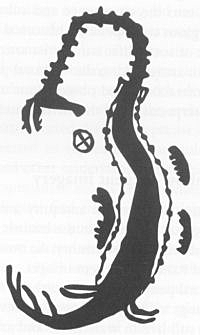
PETER HISCOCK. Archaeology of Ancient Australia. xviii+340 pages, 114 illustrations. 2008. Abingdon & New York: Routledge; 978-0-415-33810-3 hardback £75 & $150; 978-0-415-33811-0 paperback £24.99 & $46.99.

PETER HISCOCK. Archaeology of Ancient Australia. xviii+340 pages, 114 illustrations. 2008. Abingdon & New York: Routledge; 978-0-415-33810-3 hardback £75 & $150; 978-0-415-33811-0 paperback £24.99 & $46.99.
Review by Adam Brumm
McDonald Institute for Archaeological Research, University of Cambridge, UK
(Email: arb74@cam.ac.uk)

Peter Hiscock is a leading force in Australian lithic studies but his new book is a general introduction to prehistoric archaeology in Australia, aimed at undergraduates. It seems set to replace Mulvaney and Kamminga's (1999) Prehistory of Australia as the standard undergraduate textbook on the subject. In condensed form Hiscock's argument is as follows: early anthropologists saw human evolution as the progression from simple to complex societies, with some societies more progressive than others. This model was constructed using analogies with modern peoples thought to represent different stages along the evolutionary continuum. Australian Aboriginal societies were regarded as the most primitive and unchanging. Anthropologists later challenged this by showing that Aboriginal societies were as complex as others and archaeologists contributed to the debate by demonstrating that change also occurred through time in Australia. The archaeological record indicated that Pleistocene societies were less varied than those of the later Holocene and ethnographically documented periods. In other words, Aboriginal societies changed from simple to complex. Prehistoric archaeology in contemporary Australia, according to Hiscock, reflects variations around this theme. His perspective, however, is that these interpretations were reached by uncritically projecting ethnographic images onto the past. The outcome is archaeological reconstructions that view Australian prehistory as the accumulation of changes leading to the creation of the known ethnographic system. This implies evolutionary progression.
Hiscock rejects this approach, arguing that archaeologists should reconstruct ancient human life-ways using the residues left behind in the archaeological record and not through analogy with modern peoples. (In any case, Hiscock contends, smallpox spreading from European settlements probably severely disrupted Aboriginal societies long before actual contact with Europeans). He infers that the Australian archaeological record shows that the Pleistocene was not a simplified version of the Holocene and historic periods. Rather, social and economic practices in the Pleistocene were equally complex. This does not mean that Aboriginal societies were unchanging, however. Patterns of change were instead cyclical in nature, Hiscock argues, involving constant reconfigurations of existing systems. The reason that the Pleistocene looks homogenous is because the further back in time the archaeological record extends the less representative it becomes, due to attrition of archaeological materials. Human life in the Pleistocene, therefore, would have been equally as rich and diversified as in the Holocene and ethnographic periods, but we will never have more than very fragmentary evidence.
So what archaeological evidence does Hiscock muster to hint that things were more complex in ancient Australia? This is where his argument stalls somewhat. For example, Hiscock believes that Pleistocene lithic technology in Australia is more sophisticated than it looks because ancient Australians transported big tools and reduced them into small tools (the 'reduction thesis'). However, this lacks perspective: African Oldowan hominins did the same thing, so did Homo floresiensis. Moreover, his use of rock art to highlight the richness of social life in the Pleistocene is tenuous given that virtually none of this art is reliably dated. In any case, following Hiscock's own logic, discussions about ancient art seem irrelevant given that our knowledge of what those images mean actually derives from modern Aboriginal people. This latter point is significant. Rock art does not speak for itself, nor do any archaeological materials. Hiscock describes some Australian stone tools as spearpoints, but in the absence of empirical evidence how do we know they were spearpoints if not through implicit analogy with ethnographic images? Accordingly, comments like 'Rock art gives archaeologists the opportunity to trace the antiquity and transformation of motifs that carry social and religious meanings in the historic period' (p. 261) seem like special pleading. How do we know that the motifs had meanings before the ethnographic period? Maybe, even, meanings were attached to formerly meaningless motifs in response to the cataclysmic impact of European smallpox. The point is that it is hard to know where to draw the line between what can and cannot be said about the past without reference to present human conditions.
There is not the space for a more detailed critique but in short while I disagree with much of what Hiscock says I find it hard to dispute his logic. If we allow ethnography to inform what we see in the archaeological record then our understanding of the past becomes merely a fragmentary representation of the present. On this point he makes a solid case, and whether he is right or not his book will prove important to the future of Australian prehistoric archaeology.
